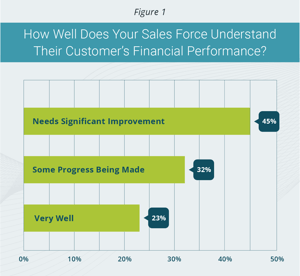 Today’s workforce is very different than any we’ve ever seen before, because for the first time in history, we have five generations working side by side. This means five generations of attitudes, communication styles and values.
Today’s workforce is very different than any we’ve ever seen before, because for the first time in history, we have five generations working side by side. This means five generations of attitudes, communication styles and values.
With older workers delaying retirement and millennials already taking over as the largest group of workers, long-established managerial hierarchies are in flux. Age is no longer the deciding factor for roles in the modern multigenerational work environment. This has implications for every sales organization – both for managing the team and for adapting sales processes and communication styles to align with our buyers — whatever age they may be.
Unique Attributes
Much noise has been made about millennials entering the workforce. To be clear, they are a unique group and have unique needs. Yet, for sales leaders, they are not the only group at play. To support your multigenerational team selling into a multigenerational market, it helps to start with a basic understanding of the unique attributes of each group. While no person is fully defined by their generational traits, this “shorthand” can help guide our approach and expectations as we’re getting to know people as individuals.
- Traditionalists (born 1900-1945): Though less than 1% of the workforce, those still in positions are usually company loyalists who have paid their dues through hard work and long hours. While they may not adapt well to change, they respect authority and value a sense of honor in their professions.
- Baby Boomers (born 1946-1964): The “Me Generation” is known to be competitive and driven, which has often led to great successes within their organizations. With a sense of idealism and optimism, these known workaholics remain team oriented and value face time.
- Generation X (born 1965-1980): The first generation to grow up technologically literate, they are fiercely independent and only seek feedback when required. Although focused on results, they are just as concerned about ensuring a work/life balance.
- Millennials (born 1981-1996): This group is highly technology savvy. They are confident and civic-minded. While they remain collaborative and ambitious, they take an entrepreneurial approach to work, welcoming challenges toward personal growth.
- Generation Z (born 1996-2010): Just entering the workforce, technology and social media are their norms. Creative and open-minded, they prefer structure and consistency while being motivated by a flexible lifestyle.
The Buyer Persona
The key component to preparing your sales force is to define your buyers. This used to be more about defining their role in the organization. Now, when developing your buyer personas and target audience profiles, generational factors should also be considered. They will influence how your buyers expect to receive their information, how they want to interact, and most importantly, how they make decisions.
A typical example is communication. While it may be natural for a tech-savvy millennial to fire off an email or text, it’s wise to remember that baby boomers appreciate face time.
This, of course, all boils down to building trust. While your buyer and seller may be worlds apart in life experiences, trust remains the handshake that the relationship is built upon. It’s about the recognition of the buyer’s needs. By creating a value-based business case where the focus is on how your solution improves their bottom line, it removes the extraneous elements and helps develop the basis for trust.
In today’s market, the power resides with the buyers. Knowing how to connect and present what is important in their language may be more challenging than in times past, but it’s also beneficial. Preparation is more valuable than ever.
A Diverse Team
Although it poses obstacles, the generational differences in your sales team do not need to be viewed as a negative. While sales leaders will inevitably need to adapt their methods, the collective attributes of a multigenerational sales organization can prove to be a winning combination.
Developing a diverse sales team begins with understanding that they will not learn in the same way. For the most part, sales skills are developed in real-time interactions and repetitive practice. So, while it may still make sense to have a variety of approaches — from textbooks to technology — it’s also true that experience matters most.
This realization has led to companies to invest in mentoring programs. As experienced enterprise sales professionals retire, they take with them a wealth of information. Making sure that their experience and learnings are passed on provides a level of stability across the organization. Cross-generational mentoring also taps into the recognition that a team member from a younger generation might be more skilled with technology or how to best communicate with that 30-year-old CEO.
Not only does mentoring grow your team’s overall skillsets, it also helps to create a more open and collaborative environment, which can go a ways in in diffusing any issues that might exist based on generational differences.
Ultimately, today’s multigenerational sales landscape calls on organizations to be more aware, more flexible, and more respectful of the variety of work and communication styles. Regardless of which generation your sales reps and your prospects come from, an openness to their potential generational differences will provide an important component to your success.
Need help training your multigenerational sales force? Learn more about our virtual and live sales training.
